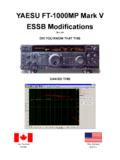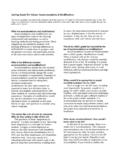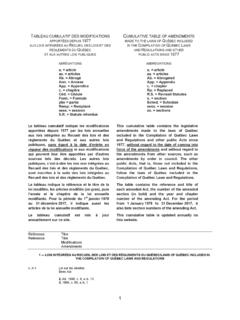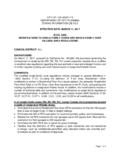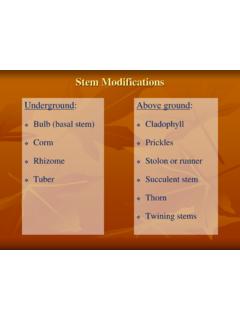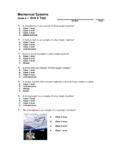Transcription of REPAIRS, MODIFICATIONS, AND STRENGTHENING WITH …
1 24|PTIJOURNAL |July 2006 ABSTRACTPost-tensioning can be used for repairs, modification andstrengthening of reinforced concrete and post-tensionedstructures. The article describes some of the commonlyused techniques and precautions for detensioning tendons,repairs and re-stressing of tendons. The article gives guid-ance to practicing engineers and contractors on techniquesthat can be used to create new openings in existing post-tensioned structures. The article also explores techniquesfor the STRENGTHENING of existing structures by ; coupler; external post-tensioning; rehabilita-tion; repairs; STRENGTHENING ; Journal, V. 4, No. 1, July 2006. Received and reviewed under Institutejournal publication policies. Copyright 2006, Post-Tensioning rights reserved, including the making of copies unless permission isobtained from the Post-Tensioning Institute.
2 Pertinent discussion will bepublished in the next issue of the PTI Journal if received within 3 monthsfrom the INTRODUCTIONDue to the aging infrastructure, repair , modification andstrengthening of existing structures is becoming increas-ingly important. This article provides guidelines and sug-gestions to assist owners and design professionals inrepairs, modifications, and STRENGTHENING of structuresusing post-tensioning. Experienced specialty contractorsand engineers have the know-how to develop and executerepairs of unbonded post-tensioning tendons, make modi-fications to existing unbonded post-tensioned structures,and strengthen structures utilizing for repairs of post-tensioning tendons arebased upon time of discovery of the problem, type of ten-dons involved, and structure type. Discovering the necessi-ty to repair a tendon prior to concrete placement is easierthan afterward.
3 Restoring integrity to button-headed wiretendons that were used in the industry in the early 1960sand1970s canbe intricate but achievable. Access to thestructure and location of repairs also plays a pivotal role inthe development of the repair changes in usage of existing structures, Modificationsarebecoming more common. Cutting openings into apost-tensioned floor system requires specialized knowl-edge, experienced personnel, and proper of structures have been successfully modifiedto accommodate tenant s needs after the completion oforiginal structures with post-tensioning tendons canbe a cost-effective solution, because new, external high-strength steel tendons can be easily installed in the struc-ture so that STRENGTHENING forces are applied where tendon geometry can easily be adjusted to workaround the existing utility pipes and ducts and apply theforces at specific points of the structure.
4 Applications ofpost-tensioning for STRENGTHENING of structures are diverseand only limited by systems have large active forces and onlyknowledgeable and experienced personnel should beinvolved in the execution of repairs, modifications, , MODIFICATIONS, ANDSTRENGTHENING WITH POST-TENSIONINGLARRY KRAUSERTECHNICAL PAPER July 2006 |PTIJOURNAL| to post-tensioning tendons are necessary whenexisting tendons are damaged, corroded, cut, broken, orhave lost their force. This section focuses on the repair andreplacement of damaged unbonded tendons. Prior toundertaking any repairs, a thorough investigation shouldbe performed to determine the cause of the measures should be implemented in the repairstrategy to eliminate the cause. The investigation mayinclude a structural analysis to determine the adequacy ofthe existing structure with the reduced forces possiblyeliminating the need to perform repairs to damaged post-tensioning tendons.
5 Poor construction details and techniques are the primarycauses of tendon deterioration. Lack of understanding ofcorrosive agents and their affect on steel has caused thedeterioration of many types of structures (precast, steel,and cast-in-place concrete). Concrete porosity (whichallows water and chloride infiltration), poor quality con-crete, and concrete mixes containing chlorides have allbeen causes of tendon deterioration. It is relatively easy and inexpensive to replace a tendon ifthe damage is discovered before the placement of or broken wires, fabrication errors, or excessivesheathing damage are some common types of problemsthat can occur during construction. Simple replacement ofthe entire tendon is the best method. Occasionally, damageto the tendon may be discovered prior to subsequent con-crete placement in a continuous tendon; in this case, splic-ing the continuous tendon may be the best alternative; thisis described in Section Sheathing damage can usual-ly be fixed prior to concrete placement without the need toreplace the tendon; this is described in Section the tendons are encased in concrete, visual inspec-tions to determine damage to the tendon are virtuallyimpossible.
6 However, some of the following tell tale signsmay indicate areas of potential Strands erupting through the slab and strands pop-ping out from anchorages Stains at grouted anchor pockets Leakage and cracks along tendon trajectories Cracks and spalls at end anchorages Grease on concrete surfaces Water leakage at expansion joints There are a myriad of causes for tendon failures in con-crete. Tendon failures can broadly be divided into failuresthat are caused during construction and failures that arecaused after construction. During construction care should be exercised not to drillor shoot pins into post-tensioned slabs where tendons maybe located. Many times inexperienced contractors maydrill or shoot column collars into concrete on top of theslab. This location is typically congested with tendons nearthe top of the slab and shooting pins may cause damage tothe tendons.
7 Possible solutions are to increase tendon topcover, control the depth of drilling, or limit the length ofshot pins. Also, mechanical contractors typically use hang-ers on the underside of slabs to attach utilities; these, areusually attached using pins shot into the slab that can dam-age the tendons at low points. Solutions include markingthe locations of tendons on the bottom of slabs, increasingtendon bottom cover, controlling the depth of drilling, orlimiting the length of shot completed post-tensioned structures, tendon failuresusually occur because of corrosion or due to tenantimprovement contractors making openings into the slabwithout proper knowledge and understanding. Corrosion istypically the cause of most tendon failures in existing struc-tures, primarily parking structures; however, corrosion hascaused tendon failures in enclosed structures as OF CORROSIONThe primary concern for corrosion is in post-tensionedparking structures.
8 The building boom for parking struc-tures closely followed the increased use of deicing the early 1950s until the early 1970s, the use of roadsalt on highways and streets increased ten fold in theUnited States. By the mid-1970s, it was recognized that cor-rosion of reinforcing steel was the primary cause of deteri-oration of highways. Bridge designers were ahead of park-ing structure designers in their awareness of this of the lag in the transfer of knowledge from high-way departments to private industry, parking designers didnot begin to react to the corrosion problem due to deicingsalts until the late 1970s and early post-tensioning industry recognized the effects ofchlorides and corrosion on the deterioration of parkingstructures in the early 1980s, however, millions of squarefeet of post-tensioned parking structures had already beenbuilt by then.
9 Fig. 1 shows the evolution of corrosion pro-tection of unbonded strand tendons for buildings andparking structures. Paper wrapping was used into the1970s for sheathing of unbonded strand and button-head-ed wire tendons until the industry recognized the corro-sion potential of this technique and phased it out. Plasticsheathing was developed as an alternative to paper wrap-ping and is still in use today. However, the industry nolonger uses a stuffed system where the strand is pushedthough a pre-formed plastic duct or the heat-sealedmethod where the strand is coated and then a flat piece ofplastic is bent around the strand and then seamed usingheat. Extruded plastic sheathing is almost exclusively in usetoday the P/T coating and plastic is extruded on thestrand in a continuous process.
10 The industry has furtheridentified and advanced the corrosion protection ofunbonded tendons with encapsulated and electrically iso-lated tendon protection techniques. The post-tensioningindustry continues to develop and refine the techniquesrequired to better protect their product from wires or strands often fail as a result of the lossof steel cross-sectional area due to conventional electro-chemical corrosion (rusting) or brittle fracture due tohydrogenembrittlement or stress-corrosion types of corrosion occur in the presence of cracking can occur without the presenceof chlorides or other contaminants. The key is to preventwater fromentering the tendon and attacking the pre-stressing steel. Some conditions that allow water to enterthe system are:3,4 Steel exposure during shipping, storage, and handling Improper protection of the tendons Damage to tendon sheathing Voids between the sheathing and the P/T coating(grease) Poor quality P/T coating (grease) Inadequately protected anchorages Improper grouting Cracks and concrete porosity (permeability) Insufficient concrete cover (placement tolerances) Joints or discontinuities of concrete membersIt is important that the sheathing tightly encase the strandswith high-quality P/T coating filing all the voids in the sys-tem thus preventing water intrusion.


